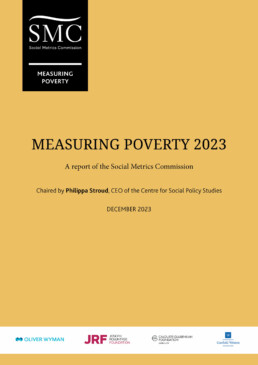This is the first report using the Social Metrics Commission’s (SMC) measure of poverty to be based on data collected from households following the onset of the COVID-19 pandemic. Its key finding is that the rate and level of poverty have both increased significantly since the start of the pandemic. If poverty rates had not increased and had instead remained at the level seen in 2019/20, around 800,000 fewer people would be in poverty than is currently the case.
Children and disabled people have been particularly hard hit, with over one in three children (34%) now living in families that are in poverty and nearly six in ten (58%) of all people in poverty being disabled themselves or living in a family that includes a disabled person. However, it is not all bad news. For example, the poverty rate amongst people living in families where adults work part time has fallen from 59% in 2007/08 to 50% in 2021/22. The incidence of deep poverty amongst those in poverty has also fallen in the recent data, with 26% of those in poverty living in deep poverty in 2021/22, compared to 31% prior to the pandemic.
These and other insights through the report provide key insights on where we should be looking to understand why poverty has fallen for some, but not others, and what all of us can do, including those in poverty themselves, to tackle poverty.
That’s why the Commission has warmly welcomed the Government’s renewed commitment to develop new measures of poverty based on the Commission’s work.
The Commission has been pleased to be able to support the work of the Department for Work and Pensions in developing this approach. As this work is taken forward, our focus will be on ensuring that the full breadth of the Commission’s measurement framework is available to policy makers, researchers and the public so that the new official statistics, can be used to effectively guide and prompt the action needed to reduce poverty in the UK.
